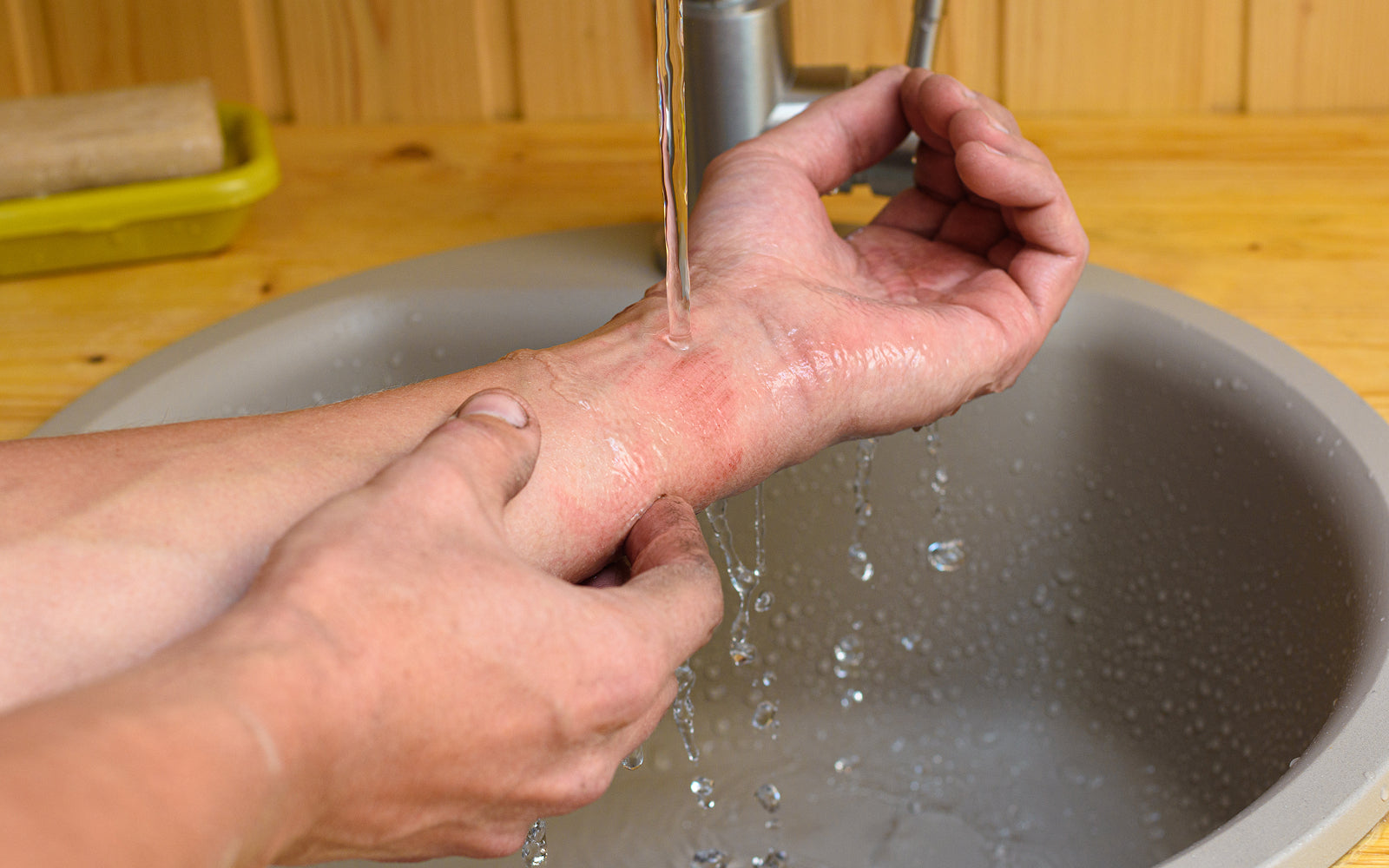
How to Treat Minor Sunburns at Home
When you get a sunburn, you not only see it, you can feel it—your skin turns red and hurts. But the symptoms don’t always happen immediately. They can sneak up on you. Redness, skin tenderness and pain can take as little as one hour, or as long as 24 hours to fully develop. If the burn is severe enough, you may also experience swelling and sunburn blisters—meaning getting immediate relief is important.
Dermoplast is here to help for however sunburns happen – from beach days and camping, to sports and winter activities.
How to get Relief From Minor Sunburn:
To begin with, at the first sign of skin reddening or the tingling of a burn, get out of the sun and start treatment to help soothe the sunburned skin.3
Cool & Soothe The Skin
Putting a cold compress on the sunburned area or taking a cool shower can help. Gently pat your skin dry and apply a moisturizer while your skin is still damp. You can also apply Dermoplast Pain, Burn & Itch Spray for fast relief from painful sunburn. It is formulated with aloe and lanolin to moisturize the skin, with benzocaine and menthol to provide relief that is cool and soothing. Use as directed.
Treat the Pain
Nonsteroidal anti-inflammatory drugs, like ibuprofen or naproxen, can help reduce the pain and swelling caused by sunburn, when used as directed. Another option is applying Dermoplast Pain, Burn & Itch Spray, which offers the maximum OTC strength of Benzocaine to numb the pain, providing comforting relief of minor sunburns. The no-touch application helps minimize discomfort when treating those tender or hard to reach sunburned areas. Use as directed.2,3
Stay Hydrated
Another symptom of a sunburn is dehydration—dry mouth, thirst, reduced urination, dizziness, and fatigue. So be sure to drink plenty of water. If symptoms of dehydration continue or get worse after a few days, contact a doctor.3
Give it Time to Heal
When treating a sunburn, it’s best to try and stay out of the sun until the symptoms have stopped, and the healing process is complete.3
By following these simple steps, most sunburns can be successfully treated at home. However, if a sunburn covers a large area, is blistering, if you experience extreme pain, headache, confusion, nausea, chills, signs of dehydration, the sunburn worsens, or the symptoms persist for more than a few days, please consult a doctor.1
Tips on how to prevent sunburns:
Excessive sun exposure not only can result in a painful sunburn, it also can lead to premature aging of the skin. And over time, intense repeated sun exposure can cause damage to your DNA, which can increase the risk of developing skin cancers.1
So it’s best to be proactive and avoid getting a sunburn by:
- Using a broad spectrum sunscreen at least SPF 30 or higher that blocks both UVA and UVB rays, as recommended by the American Academy of Dermatology. Follow application instructions.4
- Applying at least 1 ounce of sunscreen roughly 15 minutes before going outside.
- Wearing protective clothing that have a SPF rating, broad rim hats, and sunglasses.
- Trying to spend more time in the shade or indoors between 10 a.m. and 2 p.m. when the sun is strongest—even on cloudy days (sunburn is caused by UV radiation which penetrates clouds, so you can get sunburned even when it’s cloudy).
- Reapply at least every two hours, or immediately after towel drying and after swimming or sweating, according to the directions on the bottle.4,5
References:
- Sunburn. Mayo Clinic Website. https://www.mayoclinic.org/diseases-conditions/sunburn/symptoms-causes/syc-20355922. Accessed March 2019.
- Page EH. Sunburn. Merck Manual Professional Version Website. https://www.merckmanuals.com/professional/dermatologic-disorders/reactions-to-sunlight/sunburn. Updated February 2018. Accessed March 2019.
- 5 ways to treat a sunburn. Skin Cancer Foundation Website. https://www.skincancer.org/prevention/sunburn/five-ways-to-treat-a-sunburn. Published May 27, 2016. Accessed March 2019.
- Sunscreen FAQs. American Academy of Dermatology Website. https://www.aad.org/media/stats/prevention-and-care/sunscreen-faqs. Accessed March 2019.
- FDA Sunscreen Drug Facts Labeling.


